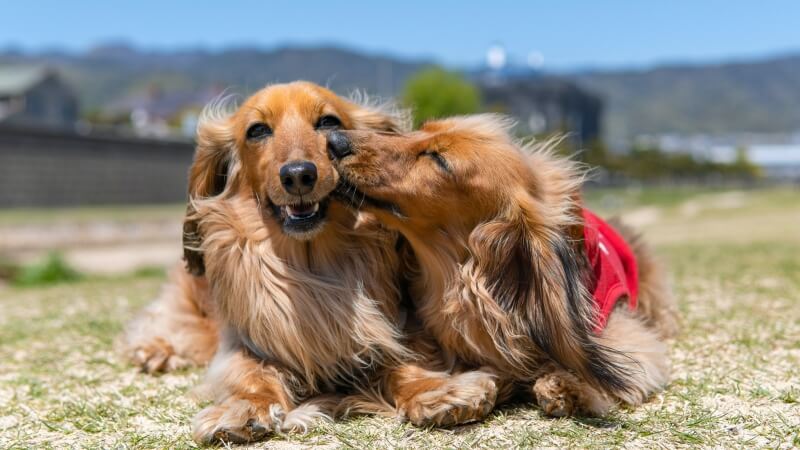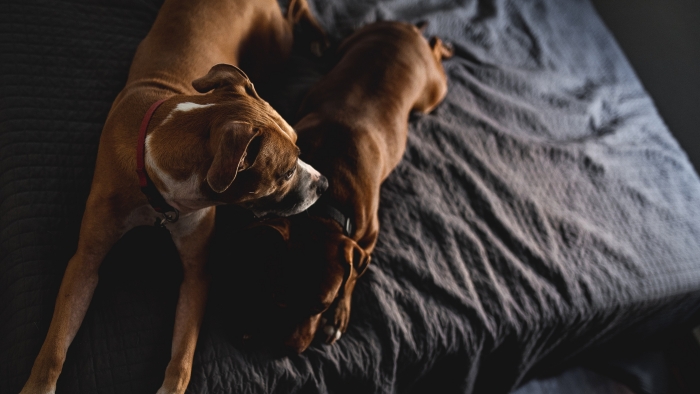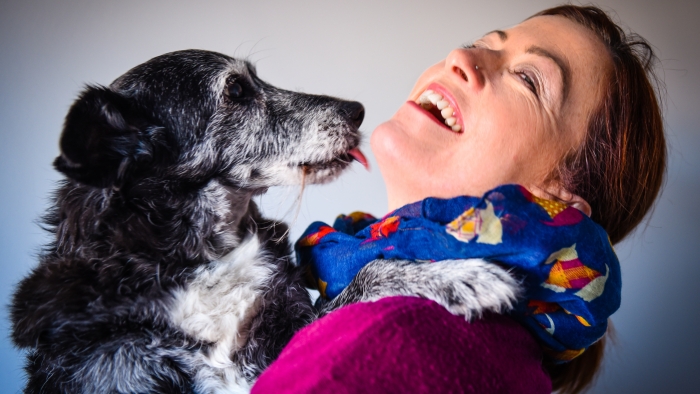How Long Are Dogs In Heat?

How long are dogs in heat? For any conscientious dog owner, understanding this key aspect of canine health is vital.
The reproductive cycle of dogs, though sometimes overlooked, is an integral part of their overall well-being. Navigating the complexities of this subject is essential for effective canine care and management.

Our detailed guide on the estrous cycle in dogs is crafted to clarify and simplify this topic.
Here, you will gain comprehensive knowledge about identifying the various stages, responsibly handling the cycle, and ensuring the utmost health of your beloved pet. Let’s delve into this important element of canine health, a topic every informed dog owner needs to grasp.
Grasping the heat cycle in dogs
The heat cycle, often referred to as the estrous cycle, is a crucial part of a female dog’s reproductive system. It signifies the period when she is receptive to mating and has the potential for pregnancy. Comprising four distinct stages, each phase of the cycle exhibits unique characteristics and durations.
Proestrus
Proestrus marks the beginning of your dog’s heat cycle. Two prominent signs indicate this stage: swelling of her vulva and a bloody discharge, which originates from her uterus.
The day this bleeding is first observed is commonly referred to as the initial day of heat. The extent of bleeding varies among individual dogs and might sometimes be hardly noticeable. The duration from the onset of proestrus to the point where she is ready to mate can vary significantly, ranging from a single day to as long as 21 days.
During proestrus, male dogs may begin to show interest, but your female dog isn’t yet prepared for mating. This phase involves rising estrogen levels, produced in the ovarian follicles, preparing her body for breeding.
Testosterone levels also increase at this time. Progesterone, another hormone, remains low throughout proestrus but starts to escalate just before the next phase, estrus, when she becomes receptive to mating.
Estrus
The estrus phase is identifiable when your dog is ready and willing to mate, being the period when she accepts a male for breeding. Hormonally, the onset of estrus in dogs coincides with the surge of the luteinizing hormone (LH) and rapidly increasing progesterone levels, coupled with decreasing estrogen levels.
Approximately two days following the LH surge, ovulation occurs, with your dog releasing eggs ready for fertilization.
Post ovulation, structures known as corpora lutea form and under LH’s influence, commence progesterone production. This hormonal shift is why veterinarians often recommend breeding your dog about 1-2 days after her progesterone levels exceed 5 ng/ml.
During estrus, the discharge lightens from a bloody hue to a straw-like color, and she becomes amenable to mating. The vulva’s swelling diminishes slightly and becomes less firm.
Diestrus
Following estrus comes diestrus, a phase marking the conclusion of your dog’s fertile window. In this stage, she is no longer in heat and rejects male advances.
Typically initiating around 7 to 9 days post-estrus, diestrus varies in onset among different dogs. During this phase, the vulvar swelling and discharge gradually subside.
For non-pregnant dogs, progesterone levels peak during diestrus, eventually returning to baseline over approximately three months. Diestrus culminates either with the birth of puppies, approximately 65 days post the LH surge in estrus, or when progesterone levels normalize in non-pregnant dogs.
Anestrus
Anestrus follows diestrus, providing a period of respite and recovery for your dog’s reproductive system, particularly the uterus. Consider it a necessary hiatus, allowing her body to rejuvenate and gear up for the next estrous cycle. The duration of anestrus typically spans about four months, though it can extend up to a year in some cases.
During anestrus, there is a noticeable decline in your dog’s progesterone levels, with estrogen also remaining low but gradually increasing as the stage concludes. Prolactin levels also decrease during this period. Essentially, anestrus is a phase for your dog’s body to reset and prepare for the upcoming heat cycle.
Duration of a dog’s heat cycle
Typically, a dog remains in heat for an average of 9 days, although this can vary significantly, ranging from as short as 2 days to as long as 3 weeks. This duration refers to the period when she is receptive to mating with a male.
The initial heat cycle in female dogs generally occurs around 5 to 12 months of age, but this can differ across breeds. Each stage in the estrous cycle is characterized by its own specific duration and traits.
Proestrus, the preliminary phase, usually spans 7 to 10 days. This is succeeded by the estrus phase, lasting anywhere from 5 to 14 days. Subsequently, the diestrus stage typically endures for about 60 to 90 days. The final stage, anestrus, extends from 4 months up to a year.
The commencement of the heat cycle is marked by the first day of bleeding in proestrus. This bleeding period typically persists for about 7 days, but it can vary among individual dogs.
Post-bleeding, the dog transitions into the estrus phase, during which she becomes fertile and willing to accept a male. The estrus stage averages 9 days in length, though it can range from 5 to 20 days. Therefore, the entire heat cycle for a dog averages 2 to 4 weeks.
During ovulation, female dogs release primary oocytes, which are immature egg cells. Unlike many mammals, these primary oocytes need to undergo a first division to become secondary oocytes, which are then capable of being fertilized. This maturation process typically takes 48-72 hours post-ovulation. Following this, the secondary oocytes remain viable for fertilization for approximately 2-5 days.
Indications of a dog in Heat
When your dog enters her heat cycle, there are several signs you can look out for:
Vulva Swelling: Typically, the first sign you’ll notice is the swelling of her vulva. It might appear noticeably enlarged or puffy.
Vaginal Bleeding: A varying degree of bloody discharge is a common indicator. The color can range from a vivid red to a more subdued brown. Initially, the discharge is quite heavy and gradually becomes lighter, eventually turning to a straw color during the peak of her fertility.
Frequent Urination: Your dog may begin urinating more often than usual. This behavior serves as a way for her to leave scent markers for male dogs.
Behavioral Changes: Changes in your dog’s behavior can be evident. She may become unusually affectionate or clingy, like licking your face, or conversely, she might display signs of agitation or restlessness.

Exhibiting Flirtatious Behavior: In the most fertile phase of her heat cycle, your dog may exhibit flirtatious behavior towards male dogs. This includes “flagging,” where she lifts her tail to the side, and other behaviors indicating her readiness to mate.
Attraction from Male Dogs: Male dogs have a keen sense of detecting a female in heat, often from afar. If you notice an increase in attention from male dogs towards your pet, it’s likely she’s in heat.
Supporting your dog during her heat cycle
- Secure Her Indoors: Given the increased attraction she may have for male dogs during her heat cycle, it’s wise to keep your dog indoors as much as possible, particularly during the estrus stage, when her fertility is at its peak. This precaution is crucial for preventing unintended mating and ensuring her safety.
- Opt for Doggie Diapers: To manage any spotting or bleeding your dog may experience while in heat, consider using doggie diapers or special pads. These are readily available at pet stores or online and can be very effective.
- Maintain Regular Exercise with a Harness: While indoor confinement is advisable, don’t neglect her need for regular exercise. Using a harness during short walks can provide her with the necessary physical activity while ensuring she’s secure and less accessible to male dogs.

- Observe Behavioral Changes: Be alert to changes in her behavior, such as increased affection or restlessness. It’s important to understand these shifts and provide comfort accordingly.
- Focus on Comfort: During this time, your dog might feel more sensitive or uncomfortable. Offering her a cozy, quiet space can help her feel more relaxed and at ease.
- Prioritize Nutrition and Hydration: Ensure she has a healthy diet and stays well-hydrated. Appetite changes are not uncommon during the heat cycle, so keep an eye on her eating patterns.
- Seek Veterinary Assistance: If you observe significant behavioral or health changes, such as excessive bleeding, lethargy, or appetite loss, it’s crucial to consult your veterinarian for professional advice and care.
Early signs of pregnancy in dogs
After understanding the signs of a dog in heat, it’s also important to recognize the early indications of pregnancy, especially for owners who do not intend to breed their dogs. Early signs of pregnancy in dogs can be subtle and sometimes resemble the symptoms of her being in heat. These may include:
- Behavioral Changes: Just like during the heat cycle, a pregnant dog might show changes in behavior. She might become more affectionate or, conversely, seek more solitude.
- Changes in Appetite: Some dogs may experience a decrease or increase in appetite early in pregnancy.
- Slight Weight Gain: While not immediately noticeable, a pregnant dog might start to gain a little weight, which is more evident as the pregnancy progresses.
- Nipple Growth and Color Change: A pregnant dog’s nipples may become slightly more prominent and darker in color due to increased blood flow.
- Mild Abdominal Swelling: As the puppies grow, you might notice a slight swelling of her abdomen, though this is more apparent in the later stages of pregnancy.
- Decreased Activity: Some dogs may show a decrease in energy levels or less interest in physical activities they previously enjoyed.
Conclusion
Understanding the duration and stages of a dog’s heat cycle is essential for responsible pet care. “How long are dogs in heat?” is a question with a multifaceted answer, as the heat cycle includes several stages—proestrus, estrus, diestrus, and anestrus—each with its unique duration and characteristics.
On average, dogs are in heat for about 9 days, but this can vary widely. The entire heat cycle can last anywhere from 2 to 4 weeks, depending on the individual dog and its breed.
Additionally, recognizing the early signs of pregnancy in dogs is crucial, especially for those not planning to breed. Monitoring your dog’s health and behavior during these times is vital for ensuring her well-being.
As a dog owner, staying informed about your pet’s reproductive health, and consulting with a veterinarian for guidance and support, is key to providing the best care for your furry companion.
FAQs
What Can I Do to Comfort My Dog During Her Heat Cycle?
Answer: To comfort your dog during her heat cycle, provide a calm and quiet environment. Extra soft bedding and gentle attention can help. Avoid overstimulating activities and be patient with any behavioral changes.
How Can I Tell If My Dog’s Heat Cycle Is Normal or If There’s a Problem?
Answer: A normal heat cycle involves signs like vulva swelling and a change in discharge color. If you notice extreme changes in behavior, unusual discharge, or signs of distress, consult your veterinarian as these may indicate a problem.
Is It Safe to Spay My Dog During Her Heat Cycle?
Answer: Spaying during a heat cycle is generally safe but can be more complicated due to increased blood flow to the reproductive organs. It’s often recommended to wait until the cycle is complete, but your vet can provide the best advice for your specific situation.
Can a Dog Get Pregnant During Her First Heat Cycle?
Answer: Yes, a dog can become pregnant during her first heat cycle. This can occur as early as 5 to 12 months of age, depending on the breed. It’s important to be extra vigilant if you are not planning to breed your dog at this young age.
How Can I Safely Socialize My Dog with Other Dogs During Her Heat Cycle?
Answer: During her heat cycle, it’s best to avoid socializing your dog with male dogs to prevent unwanted pregnancy. For socialization with other females or neutered males, ensure it’s in a controlled, secure environment, and closely monitor their interactions.

